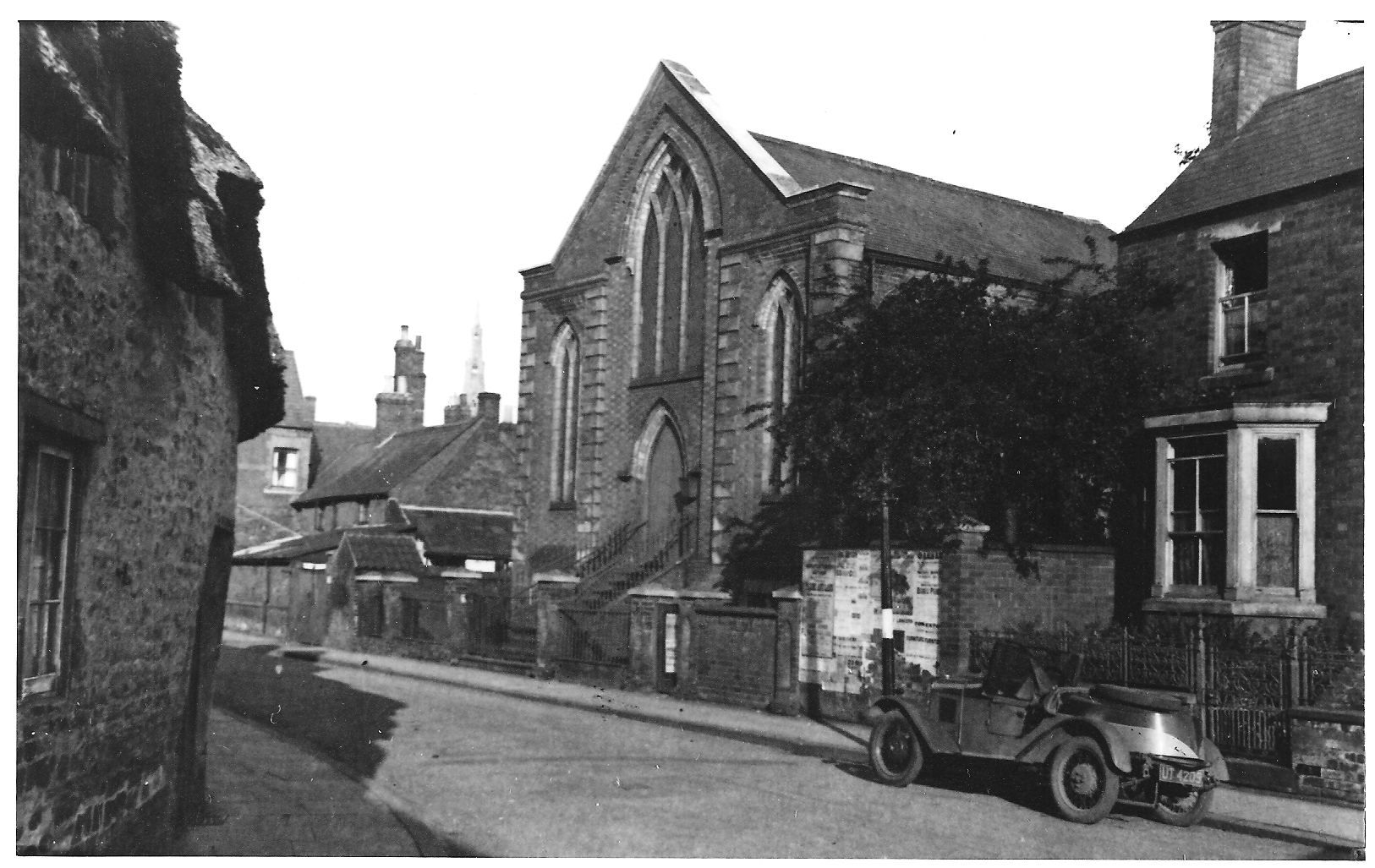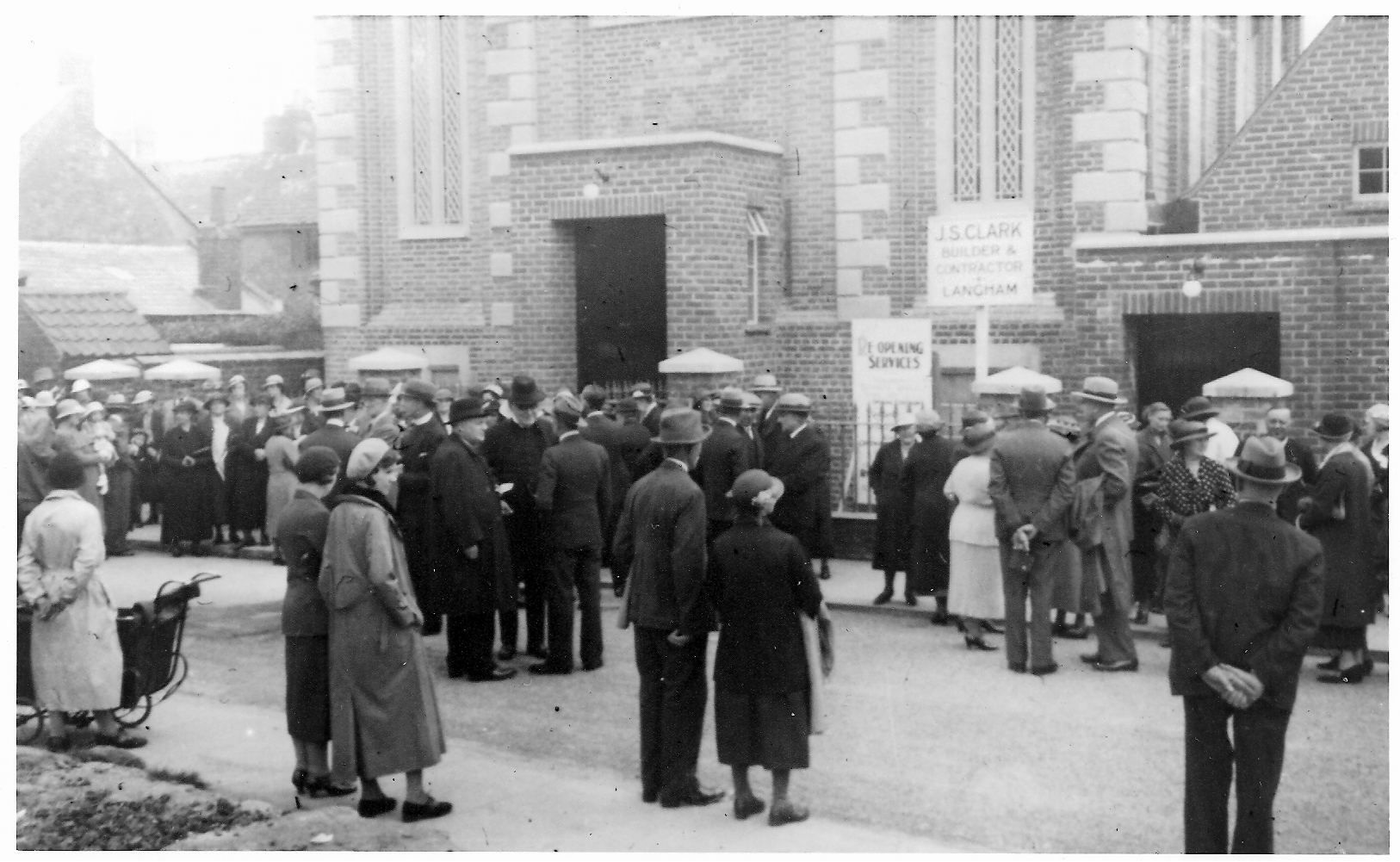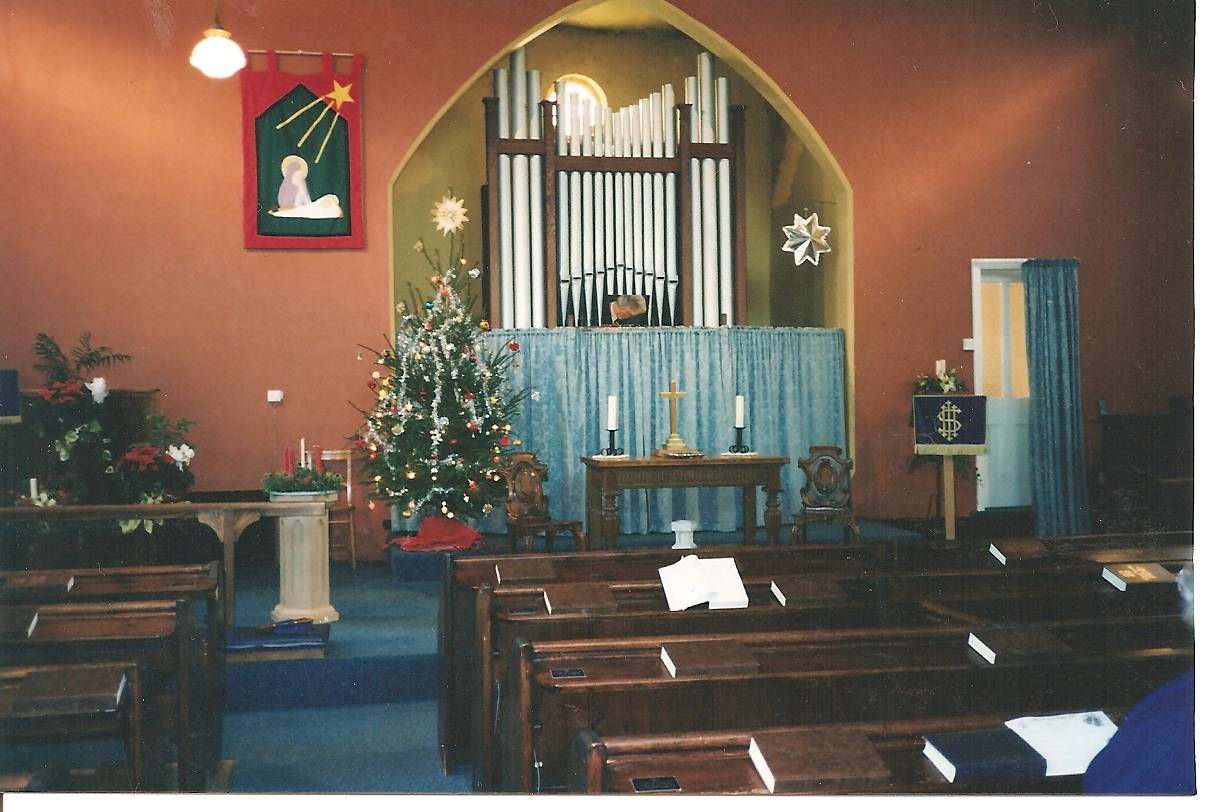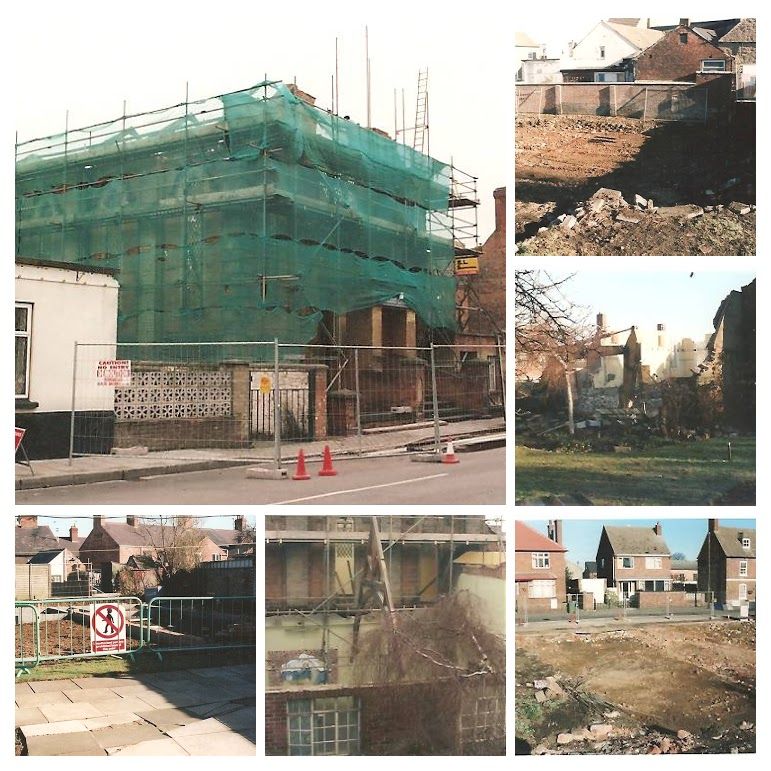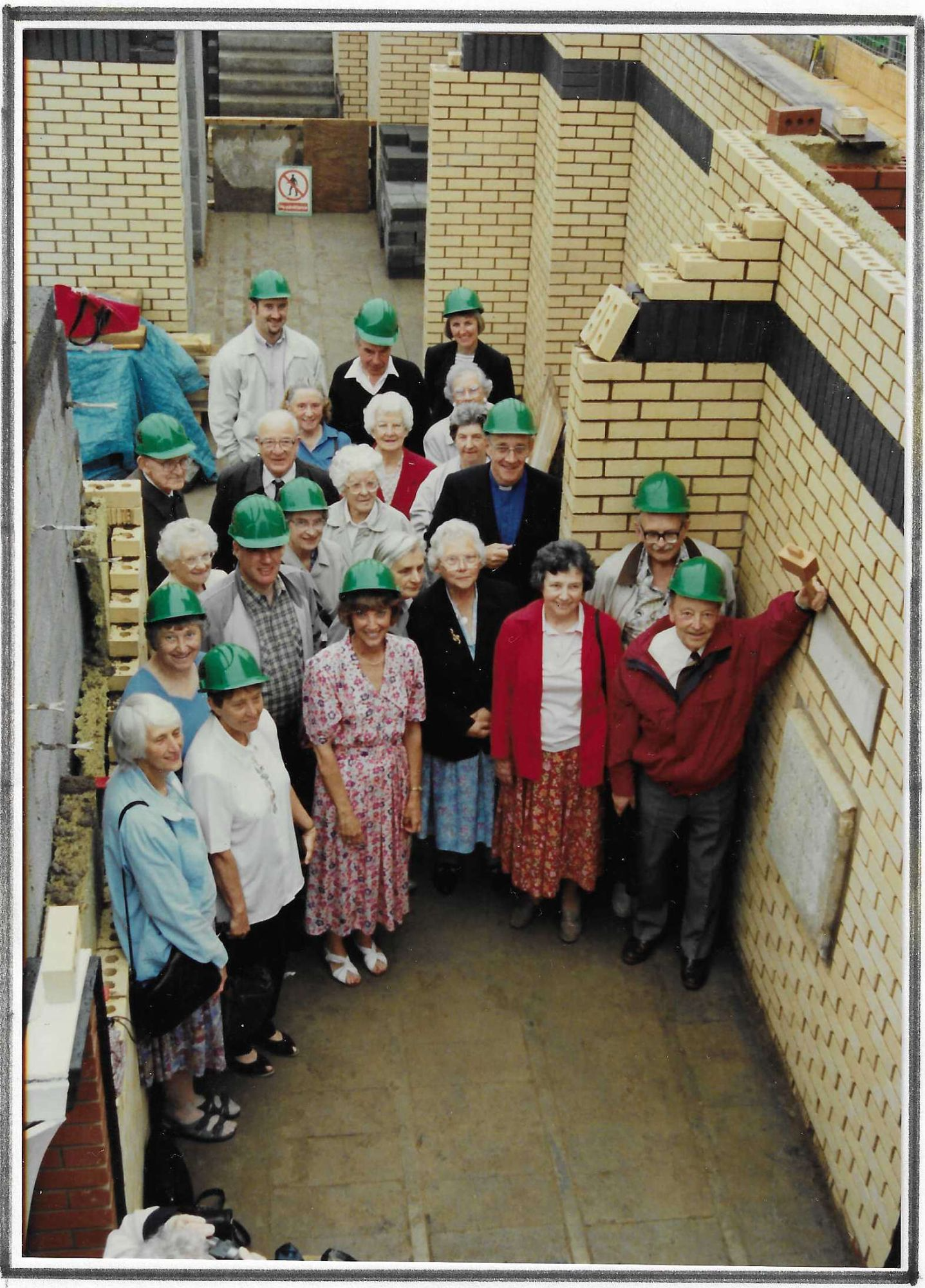A Church Tour
HISTORY OF OAKHAM METHODIST CHURCH
In the mid-nineteenth century there were both Wesleyan and Primitive Methodist Churches in Oakham. The Wesleyan Church which was probably built in 1811 was in Dean Street behind the site of the present church. In the mid 1850’s it was decided to raise funds to build a manse for the minister and then a new chapel.
In the 1860’s the manse had been completed and minds turned to the new chapel even though there were still debts outstanding on the Dean Street chapel. A site was found in Northgate next door to the Blue ball, a beer house owned by John Ingram, the vendor.
At the end of 1863 the Chapel Committee was preparing to build a boundary wall. The Dean Street chapel was put up for sale by auction in early 1864 but failed to achieve its reserve price.
At this time the Primitive Methodists also were looking for a site for a new chapel. After prolonged negotiations they agreed in October 1864 to purchase the Dean Street chapel. As it turned out the Wesleyan’s failed to obtain the amount of money they wanted, and the Primitives over committed themselves financially.
Building the new church at Northgate was not easy. There were problems of cost and some of the desired facilities had to be omitted. But by April 1865 plans were proceeding so well that arrangements were made to lay a foundation stone. ‘Francis Lycett Esq. of London’ (soon to become Sir Francis) was the person invited. He was a businessman who had made a fortune in glove making and was ‘an influential member of the Wesleyan denomination’. We are told that he had already ‘had the pleasure of laying the foundation stones of twenty chapels in various parts of the country’!
The ceremony took place on 10 May 1865 – the foundation stone can be seen in the church entrance today along with a time capsule which was placed into a recess at the same time. Six months later on 3 November 1865 the new church was officially opened. It could seat 300 people and probably, therefore, had a gallery, although there is no record of one.
Other building phases followed. In 1893 the vestry (dropped from the earlier plans because of cost) was completed as well as classrooms for the Sunday School. The latter may have been in the basement, ‘as if (the young people) were doomed to the catacombs right away’ someone later observed. In 1935 the School Hall was added on the west side of the church in addition to other major alterations.
n September 1932 Wesleyan, Primitive and United Methodists merged, forming the Methodist Church of Great Britain. Money from the sale of the Dean Street Chapel went towards the 1935 renovation.
The stone laying ceremony which took place on Easter Monday 1935 involved the laying of nineteen stones and sixty bricks by various people, young and old, representing different sections of the church and in memory of departed friends.
Another major milestone was reached on 21 January 1936 when the practise of families who regularly attended church renting their pew was abolished!
There were building works in the second part of the twentieth century particularly in 1962 and 1982 when further improvement and modernisation to the worship area were undertaken.
By the 1990’s the design and layout of the church fell far short of modern requirements of worship and church activity. A larger worship area was needed to meet the anticipated increase in numbers. The condition of the fabric was poor. Renovation would have been hugely expensive. It all pointed to a brand new church and the idea was born during the ministry of the Rev Gordon Spittlehouse. As in the nineteenth century the development started with the manse when 44 Northgate (next door to the church) was purchased in 1991.
The vision was achieved during the ministry of the Rev Tony Smith and a new church and premises, fit for the modern age was built. The cost was £366000 plus furniture and fittings. The foundation stone was laid on 11 June 1997 and the official opening was on 28 March 1998.In the early 21st century the Northgate manse was sold and a modern manse purchased on an outlying estate
Further information on Oakham Methodist Church can be found at the Record Office for Leicester, Leicestershire and Rutland www.leics.gov
This history is based on an essay written by church member Barbara Dean and publised in Rutland Record No.13 1993. It was updated by Ron Curtis, church member, in 2004 and by the Circuit Archivist in 2010.

